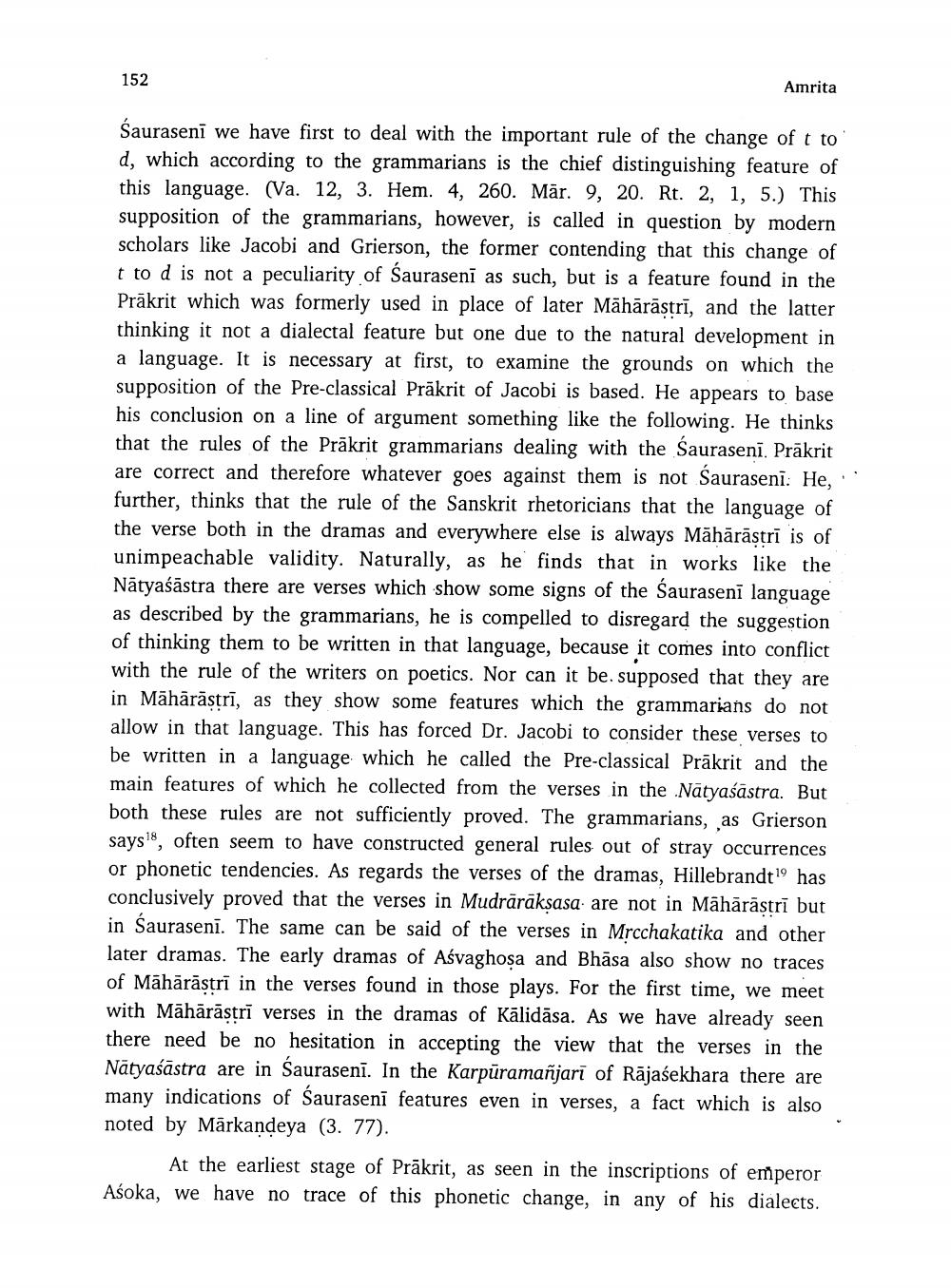________________
152
Amrita
Sauraseni we have first to deal with the important rule of the change of t to d, which according to the grammarians is the chief distinguishing feature of this language. (Va. 12, 3. Hem. 4, 260. Mār. 9, 20. Rt. 2, 1, 5.) This supposition of the grammarians, however, is called in question by modern scholars like Jacobi and Grierson, the former contending that this change of t to d is not a peculiarity of Sauraseni as such, but is a feature found in the Prākrit which was formerly used in place of later Māhārāstrī, and the latter thinking it not a dialectal feature but one due to the natural development in a language. It is necessary at first, to examine the grounds on which the supposition of the Pre-classical Prākrit of Jacobi is based. He appears to base his conclusion on a line of argument something like the following. He thinks that the rules of the Prākrit grammarians dealing with the Saurasenī. Prākrit are correct and therefore whatever goes against them is not Sauraseni: He, further, thinks that the rule of the Sanskrit rhetoricians that the language of the verse both in the dramas and everywhere else is always Māhārāstrī is of unimpeachable validity. Naturally, as he finds that in works like the Nātyaśāstra there are verses which show some signs of the Sauraseni language as described by the grammarians, he is compelled to disregard the suggestion of thinking them to be written in that language, because it comes into conflict with the rule of the writers on poetics. Nor can it be supposed that they are in Māhārāstrī, as they show some features which the grammarians do not allow in that language. This has forced Dr. Jacobi to consider these verses to be written in a language which he called the Pre-classical Prākrit and the main features of which he collected from the verses in the Natyaśāstra. But both these rules are not sufficiently proved. The grammarians, as Grierson says, often seem to have constructed general rules out of stray occurrences or phonetic tendencies. As regards the verses of the dramas, Hillebrandt" has conclusively proved that the verses in Mudrārāksasa are not in Māhārāstrī but in Saurasenī. The same can be said of the verses in Mrcchakatika and other later dramas. The early dramas of Ašvaghosa and Bhāsa also show no traces of Māhārāstrī in the verses found in those plays. For the first time, we meet with Māhārāstrī verses in the dramas of Kālidāsa. As we have already seen there need be no hesitation in accepting the view that the verses in the Nātyaśāstra are in Saurasenī. In the Karpūramañjarī of Rājasekhara there are many indications of Sauraseni features even in verses, a fact which is also noted by Markandeya (3. 77).
At the earliest stage of Prākrit, as seen in the inscriptions of emperor Asoka, we have no trace of this phonetic change, in any of his dialects.




